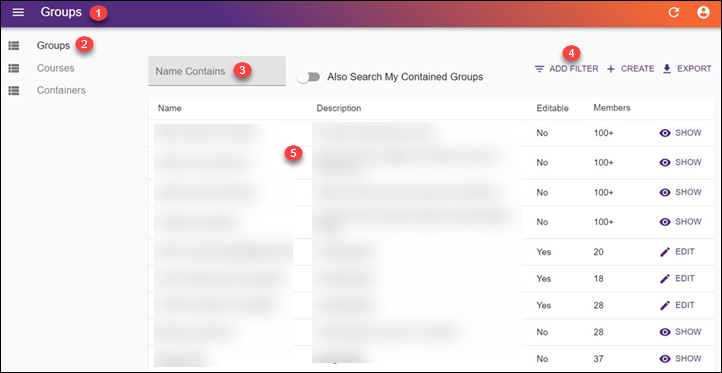
This manual is meant to serve as a comprehensive guide to CU Central (https://central.app.clemson.edu) and all its features. The document is broken into four major sections. This includes one for general layout/UI and three corresponding to the 3 modules of the tool: Groups, Courses, and Containers.
When you visit CU Central (https://central.app.clemson.edu) you initially land on the Groups module which lists all groups to which you belong. The major components of the home screen are as follows:

The groups module allows you to view members and settings for groups you belong to, edit memberships and settings for groups you own (directly or via containers), and create new groups. Creating a new group or viewing an existing group includes many or all the same options as editing an existing group so the remainder of this section will focus on editing a group.
You are able to adjust group memberships as well as features and options for a group by clicking the Edit button from the main groups page. Within the group editor there are 3 tabs which are outlined below.
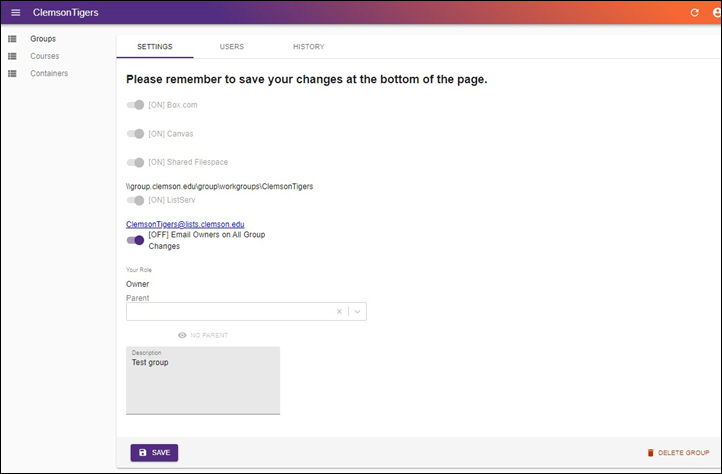
The Settings tab allows you to add or remove features, assign a parent container, and alter or add a description for your group. The available features are currently as follows:
Adding a meaningful description for your group will help your group members tell what the group is for and will help CCIT identify its purpose if you ever need our assistance.
Before any changes are written or features provisioned, you must click the Save button.
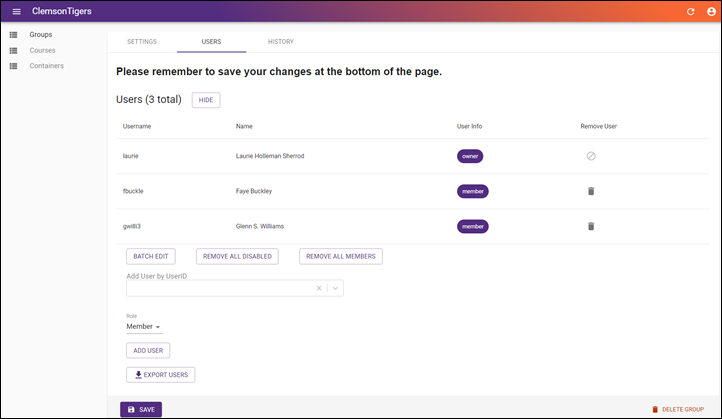
The Users tab of the group editor allows you to add/remove owners and members individually or in bulk.
To add individual user(s):
To batch (bulk) edit group members:
There are two addition bulk operation buttons that will help you manage major changes to your group membership.
The history tab has a simple view-only, chronological table of changes made to the group. Each table record includes when the change was made, who made the change, and what was changed.
The Courses section of CU Central provides a list of courses to which you belong and allows administrators to view membership for any course.
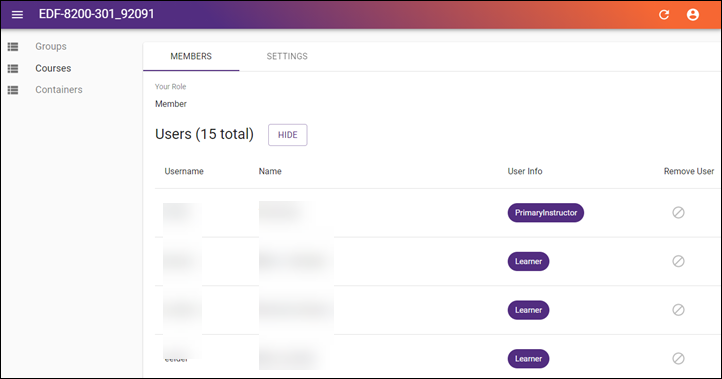
When viewing a specific course, there are two tabs: Members and Settings. The Members tab shows a table of all people in a course, their username, and their role. The Settings tab is currently empty.
Knowing the naming structure of courses at Clemson will help you when searching for courses within CU Central or even when trying to email your course listserv.
The fictional, example course S1908ECON-1010-001_12345 can be broken down into 5 parts:
Knowing any combination of those course details will help you narrow down your search results.
Containers are the newest feature of CU Central and group management at Clemson. Group containers allow you to correlate a collection of groups for easier management whether its overall visibility of related groups or you need to manage groups without being a member of said groups.
Containers are used strictly for hierarchal group ownership and administration. Permissions granted to an individual group within a container are not transferred to the parent container or other children within the container. If you need rights or access granted by a child group, you will need to be a direct owner or member of that group.
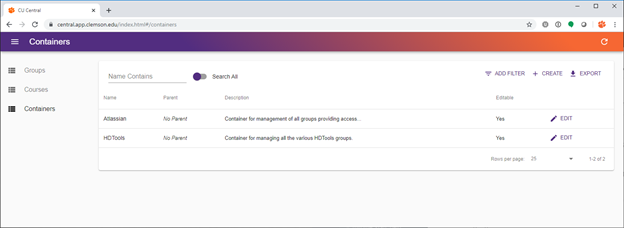
The layout for the Containers module is the same as the Groups module allowing you to view, search, export, and edit your containers or create a new container.
The container editor within CU Central is broken into 4 tabs described below.

Like the settings tab of the group editor, the container editor allows you to toggle available features, assign a parent container, and add a description. Currently, the only feature available to containers is the ability to email owners upon all changes to said container.
Remember you need to click the Save button before any changes will be applied.
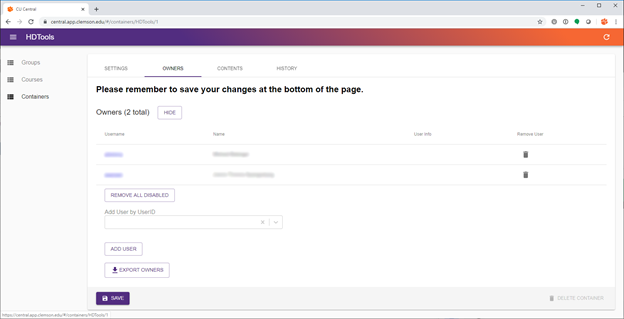
The owners tab of the container editor is similar to the members tab of the group editor. The main difference is containers only have owners as containers are strictly for management rather than granting permissions. Additionally, there are no bulk or batch edit options for managing container owners.
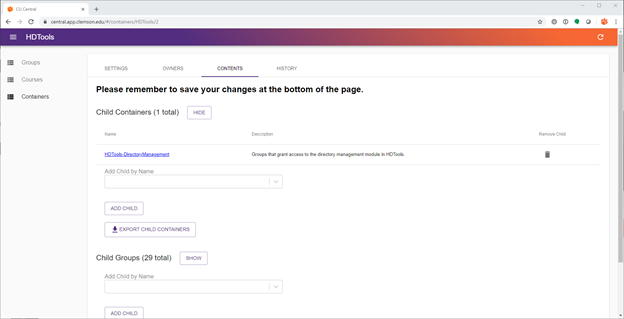
The Contents tab is the heart of the container editor. This is where you add objects to your container in the form of child containers or groups. To add a child container or group, click in the corresponding ‘Add Child by Name’ text box and start typing the name of a container/group you would like to add. After typing at least 3 characters, the autocomplete feature will search for containers/groups with names starting with those characters. Select your desired group from the results and click the Add Child button to add it to the table. You must click Save at the bottom of the page for any changes to be applied.
The history tab of the container editor displays a read-only table of all changes made to the container or any of its children. The table includes when a change was made, who made the change, and what change was made.
If you have more questions, email ITHELP@clemson.edu or call 864-656-3494.
Article ID: 2066
Created: March 9, 2021
Last Updated: July 16, 2025
Author: Laurie Sherrod
Online URL: https://hdkb.clemson.edu/phpkb/article.php?id=2066